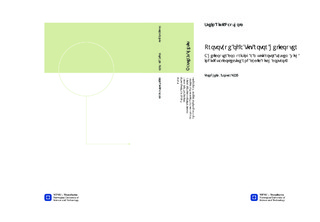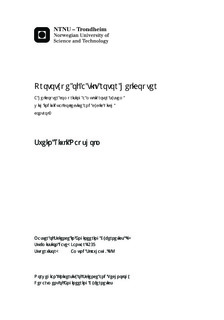| dc.description.abstract | The use of drones and remote operated aircrafts has become a useful tool for the oil and mining industry, when searching for new production areas. The remote controlled aircrafts can perform some of the tasks during these operations such as deploy sensors, gather geographical data and perform area inspections. The smaller and cheaper aircrafts are a cost and time effective solution compared to using bigger helicopters and air planes. In this master thesis, it is proposed a new type of remote controlled helicopter that is capable of performing the tasks mentioned above. The helicopter was designed with four rotors, where each rotor has cyclic and collective pitch control. This makes the helicopter capable of controlling the rotor thrust in the longitudinal and transversal direction, which is a necessary property to have when it is performing inspection tasks and performing 3d maneuvers (e.g upside down). In this thesis, it has been derived equations based upon the two aerodynamic theories, the "Momentum theory" and the "Blade element theory",to compute the required power necessary for the helicopter to fly. It has been developed software for testing the rotor system and a buffer card that is used to transform the signals to and from the micro-controller. In addition it has been developed and built a test bench, which can measure the rotor system's maximum lifting capacity and rotational velocity.It have been developed three different designs of the helicopter's rotor system and all of them have been built and tested. Among the three rotor systems, one of them was established as a working prototype, and additional tested to detect its lifting properties. A mathematical model of the helicopter has been derived which has been used in simulations to detect the helicopter's stability properties and behavior when subjected to winds and downdrafts. To create a realistic simulation, the test results for the rotor system was used as parameters for the helicopter model. Three different architectural designs have been proposed; a system architecture, a hardware architecture and a software architecture. The architectures give an overview on how the hardware and software are connected and how they interact. In addition, it is proposed how the software can be constructed so the helicopter can operate in autonomous and manual mode. Based on the good results from the simulation, a complete helicopter with the desired tilt system was designed and constructed. In the end of this report a model predictive controller was proposed as a control strategy, which could be used to optimize the helicopter's fuel/battery consumption. The test results from the simulation showed that this helicopter can be tilted 58 without losing altitude, and can reach speeds up to 15 m/s (14 m/s levelled). It can also withstand downdrafts up to 8 m/s when leveled (4 m/s tilted) and crosswinds up to 16 m/s. The conclusion is that this helicopter's performance is about the same as for bigger quadcopters, but it has many additional advantages. The helicopter can be equipped with petrol driven motors instead of the electric ones, which makes it capable of operating over vast distances and in cold environments. It can be positioned with high accuracy during inspections tasks, due to its cyclic and collective pitch control. It can be equipped with fixed wings to the tilt rotor system which will serve two purposes; it will compensate for the reduced lift capacity caused by the tilted rotors and help minimize the fuel/battery consumption. The many unique features of this helicopter make it a very versatile flying machine, which is optimum for use in the industry. | nb_NO |

